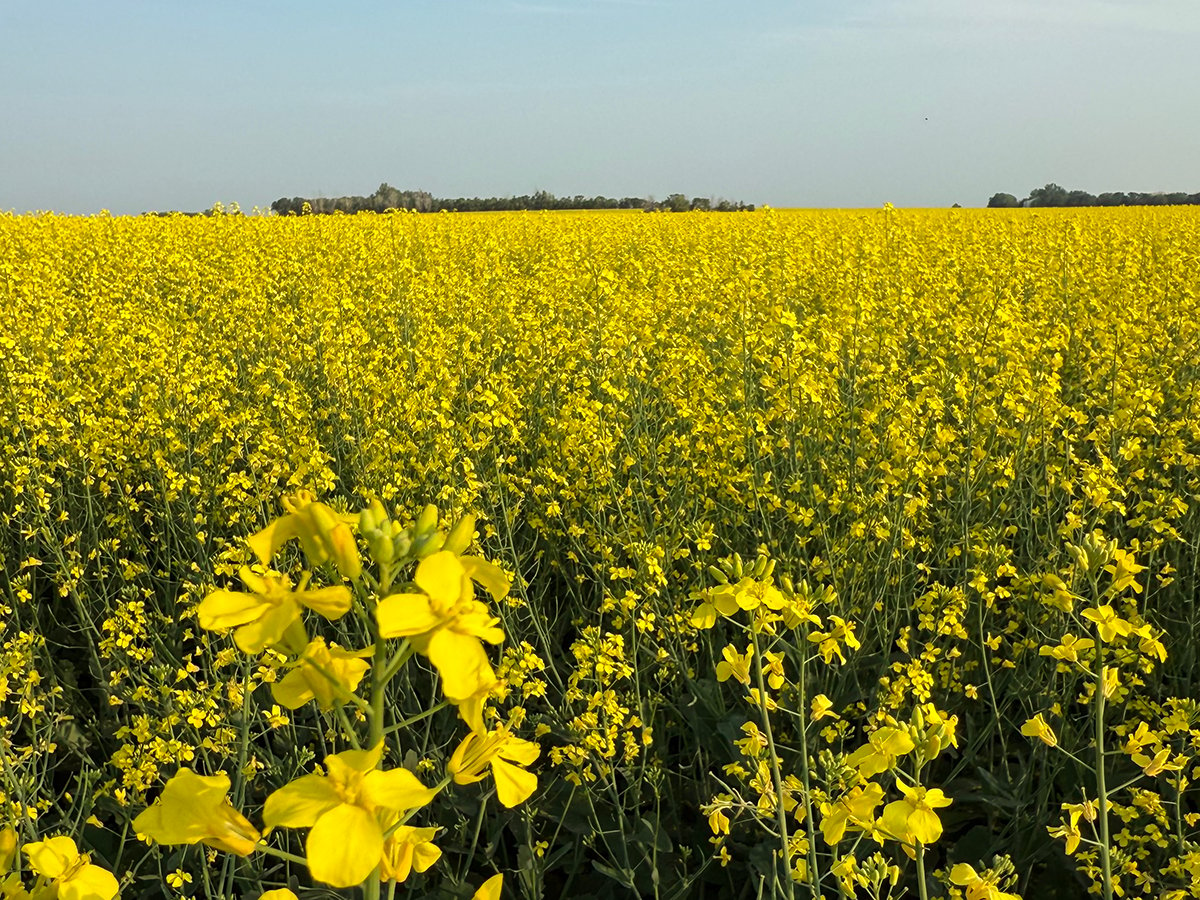WOODROW, Sask. – Next spring, the now-frozen Wood River in southern Saskatchewan will twist and turn its way from the Wood Mountains to Old Wives Lake carrying more than just snow and ice melt.
Romanticized and made popular by singer and songwriter Connie
Kaldor, the picturesque watercourse has unwittingly become known, at least to locals, for something less desirable.
Leafy spurge flourishes along its banks and the noxious weed’s hardy seeds can be swept along with the water to infest new areas.
Read Also

Canola support gets mixed response
A series of canola industry support measures announced by the federal government are being met with mixed reviews.
Thomson Lake is the reservoir formed in 1958 by a dam on the Wood River between Lafleche and Gravelbourg.
About 64 kilometres of the Wood River are infested. That’s about 128 kilometres of riparian area.
MacKenzie said farmers upstream from the reservoir recognized the problem several years ago and have tried to control it through chemical application, mowing and grazing. Organic producers constantly mow to prevent seed set, she said.
They have been able to beat the spurge back to the river.
But the problem now is just who is responsible to control the weed from that point.
“To the high water mark is the producers’ responsibility,” MacKenzie explained. “What can we do when we don’t have a high water event to control the spurge?”
The weed management area organized a tour last fall for government and other stakeholders to see the situation first hand. Someone has to take responsibility, the members say.
The WMA was formed three years ago and originally included seven rural municipalities: Val Marie, Old Post, Waverley, Mankota, Glen McPherson, Wood River and Pinto Creek.
Mankota and Glen McPherson are no longer participating.
The Crossing the Medicine Line Network, comprised of organizations working in the northern mixed grass area of southern Saskatchewan and Alberta and northern Montana, is also a member while Grasslands National Park is a supporter.
Leafy spurge appeared in the Meyronne Community Pasture 40 years ago, probably from contaminated hay. There are pockets of spurge throughout the Meyronne/Woodrow region spread through deer, hay and water.
More recently, contaminated flax seed from Manitoba 20 years ago led to spread in the Wood Mountain area. A well-established riparian infestation was found last summer along a seasonal creek.
In the Frenchman River watershed, leafy spurge arrived 40 years ago also through contaminated hay. There is one confirmed riparian infestation.
“We know where our spurge is now,” MacKenzie said.
The group has undertaken various control methods including sheep, beetles and spraying. Beetles take a long time to establish. Ten years of work at one site still hasn’t resulted in a population.
Steep banks make it tough for sheep to graze in some areas, and most of the land involved in this project area is crop land.
“Sheep keep seed set down,” MacKenzie said. “It’s a matter of what else can be done.”
The WMA successfully applied for $10,000 through the Agricultural Demonstration of Practices and Technologies, or ADOPT, program under Growing Forward. It will use the money on what MacKenzie described as “one solid 130-acre piece of leafy spurge.”
Landowners within the WMA work with a field technician to decide which control measures are best. The control cost is shared 50 percent by the landowner, 25 percent by the RM and 25 percent by the WMA. The farmer is responsible for application.
But control around the river remains a concern. The water quality is poor because of the invasive plants, she said, and farmers are hesitant to spray too close to the water. She said they need a product that is safe along the water.
“We know our water quality is low,” she said. “But we can only deal with one thing at a time.”
MacKenzie also said the WMA needs a strategy to deal with other invasive weeds.
“We here are the first line of defence for weeds coming from the U.S.”
She and others are already looking out for salt cedar, a plant that can use 120 litres of water per day and choke out everything else. It isn’t a problem in Canada yet, but is in Montana.
MacKenzie added that stakeholders have to look at the bigger picture, too. Recreational water users, communities and other watersheds could all be affected by the spread of invasive plants.
That’s why the WMA believes governments should step up and provide more funding.
She noted that no single agency looks after crown land along a watercourse. The federal departments of agriculture and fisheries and oceans, and the provincial ministries of environment, agriculture and the watershed authority all play roles.
“Who do you deal with?” she asked. “Who is our contact?”















